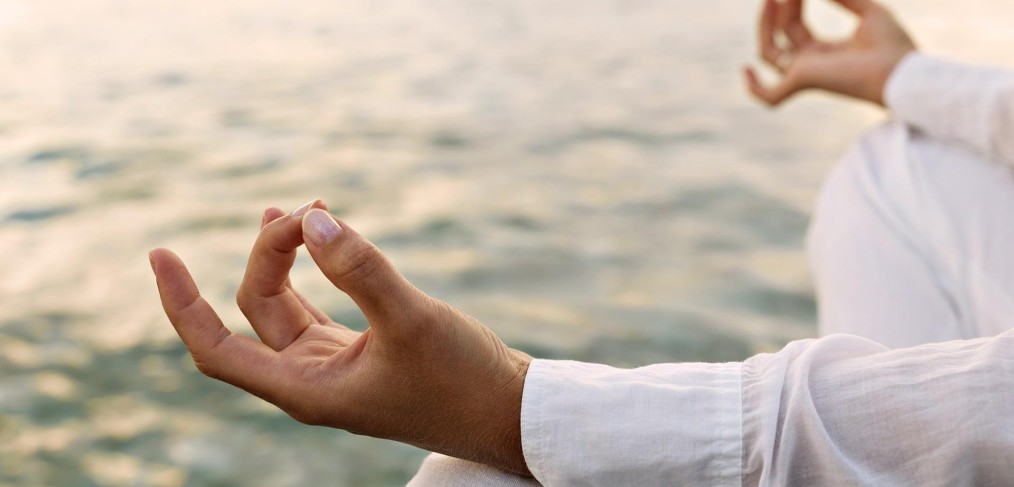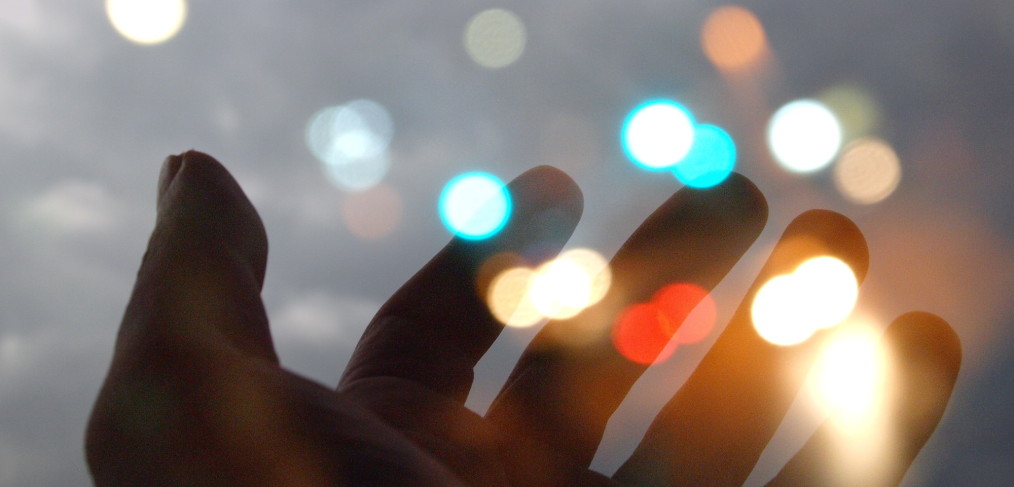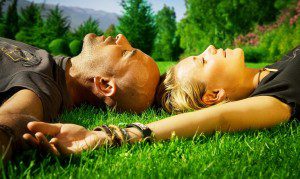On a bleak weekday of your spiritual journey you arrive home, full of stress and frustration, and open the mailbox. It is, as usual, full of advertising brochures. You are about to throw them all in the dustbin, but what you read on the cover of one of them raises your attention. You read the following:
Positive thinking makes you happy! Happy, because you can always look at yourself like you are looking at a miracle. Positive thinking is the magnet of happiness. If you think of something, you will start attracting it. If your thoughts are beautiful, you will attract beautiful things, whereas if you are looking at the world pessimistically, your whole life will be a tragedy. Change it, and you will be happy!
Yes, that is what is missing from your life: happiness!
You read the rest of the text on the page with interest, the five main points of positive thinking are:
- I am existing in this world in order to fulfill my mission.
- I achieve what I really want–I want things that are positive for me and advance me in life.
- In the course of my development I need practice, experience and insight.
- I am able to convert my negative emotions and thoughts into positive ones.
- I am capable of loving myself, even with my weaknesses and faults.
If you wish to experience these five points, your life will be happier, more wholesome and harmonic.
You are invigorated by what you have read, you believe that you are feeling alive, first time for several days, and the world around you is beautiful. You decide that from now on you will think positively, and with the power of positive thinking you will be able to change your life.
But is that really true?
Lets have a closer look at those positive thoughts:
I Am Existing in This World in Order to Fulfill My Mission
In order to fulfill our mission, we need to know in the first place what our mission is!
During our Spiritual Journey, our mind has set up a number of goals and objectives for us. We have often believed “yes, that is it, that is the real thing”, but finally we realized with disappointment that it was not the case. What is the guarantee that the new goal set up in front of us by our mind and positive thinking, will really change our life? We do not even have a chance to see that, as long as we seek for the mission of our life in the world of shapes and forms.
Still, this endless chase for unfulfilled desires is not entirely useless as, after a while we get tired on our Journey, and realize the futility of the eternal tread-wheel.
I Achieve What I Really Want – I Want Things That are Positive for Me and Advance Me in Life
This idea further refines the notion of our mission, as we are allegedly attracted to things that advance us on our Journey towards fulfilling our mission. Have you ever thought about whose ideas these really are, who wants to achieve advantages?
Even a brief self-analysis will reveal that these ideas are dictated by the Ego-dominated mind. As long as the glue of identification binds us to the mind on our Journey, these are in fact our own ideas, and they forge our ambitions. Where these ambitions take us is something that we have seen at the mind games. Sometimes we get so hopelessly stuck in the net of the world of shapes and forms that only the death is able to get us out of there.
But if we recognize the trap, we may even experience our disappointments on our Spiritual Journey in a way that the disappointments effectively dissolve the glue of our identifications. Positive thinking is therefore not primarily useful for us and our Ego-dominated mind, but much more so for the awakening of the Consciousness.
In the Course of My Development I Need Practice, Experience and Insight
From early infancy, we have been brought up with the concept that we are not perfect, we need to develop, we need experience and insight in order to be better and more perfect. That social conditioning is the reason why we almost all fall into the trap and we believe we are able to achieve perfection in the world of shapes and forms. The eternal law of shapes and forms is, however, that a specific form is born, it flourishes and then dies, to give its place to the new ones.
There is no place for eternal perfection in the world of forms and shapes, and we look for it in vain on our spiritual Journey. Insight and practice are necessary to the final experience that will make us recognize that perfection is not to be found in the world of the mind, in the world of forms and shapes, and it cannot be grabbed by our thoughts.
I Am Able to Convert My Negative Emotions and Thoughts Into Positive Ones
The technique of positive thinking is not able to change you. All that happens is that it suppresses the negative dimensions of your personality. Positive thinking does not mean more than relegating negative ideas, thoughts and emotions into the unconscious level of our mind. Once ideas disturbing us or others have been suppressed, we condition our conscious mind with positive thoughts.
Osho asserts that the problem with this solution is that our unconscious mind is more powerful, nine times larger than the conscious one. As soon as we relegate an idea down there, it will be nine times more powerful than it used to be. It will not be there in the old way, but it will find new manifestations.
If you suppress some negative idea or emotion, just because you find irritating, even you yourself may be aware that it is only self-deception. Deep inside you the suppressed idea of emotion continues to work, and at the conscious level of your mind you are trying to make it look nicer. On the surface you may smile, but this smile is only skin deep.
If you are able to exceed that situation, reaching beyond the mind, you will always be able to look at the process as an external observer, and realize that positive thinking levies heavy the burdens of suppressed, internal tensions on your personality. These suppressed tensions may burst out like a volcanic eruption one day.
I Am Capable of Loving Myself, Even With My Weaknesses and Faults
This love is perhaps not the unselfish love of accepting ourselves; it largely depends upon the efficiency of the implementation of the first five points. If I am successful in positive thinking, if I am able to use this method successfully in my life, I have every reason to love myself. If I am unsuccessful, the love of myself may easily turn into disappointment and despair.
The latter has, we must realize, a much greater likelihood than reaching altitudes never experienced before as a result of positive thinking. We may conquer one peak or two, but as we have discussed previously, in the world of shapes and forms not success but change is the permanent tendency.
Consciousness without Choice
As a conclusion we may say that positive thinking may render a good service to us, though not in the way we originally expected. The impossibility of implementing positive thinking in the world of forms and shapes and the failures rooted in it may shatter or quiet the Ego-dominated mind, and open up the way to the re-emergence of a new mental ability.
On our Journey, we must acquire a new Consciousness which is neither positive, nor negative; that of Consciousness, the Witness, the Spectator without having to choose. It is the Pure Consciousness, which will completely re-shape your entire life.
You will astounded to see that if you stay as a Witness in the world of shapes and forms, in the Consciousness without having to choose, as a Spectator, how intensively will something appear in your soul. Something that points beyond both positive and negative, something higher than both.
Author: Frank M. Wanderer, Ph.D l Wake Up World







